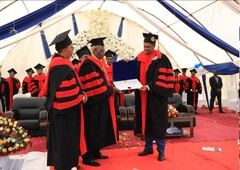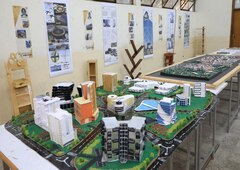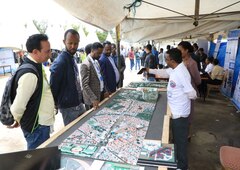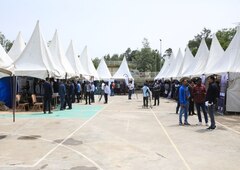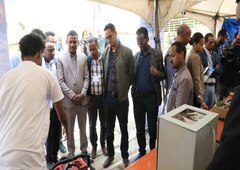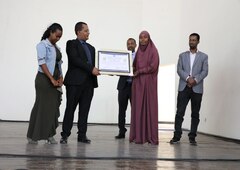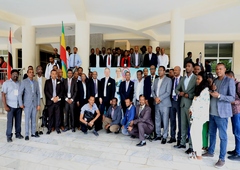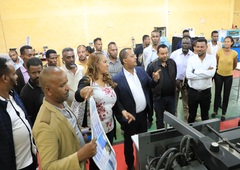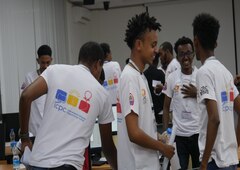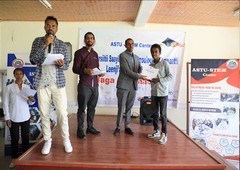Guidelines for Authors: EJSSD
The Ethiopian Journal of Sciences and Sustainable Development (EJSSD) is a blind reviewed Journal published twice a year by ASTU. The EJSSD is cross-disciplinary in nature. The journal is the place for exchange of information and research results that describe significant advances in field of Engineering, Science, Technology, Business, Education, Humanities and Law, Agriculture and Health and sustainable development.
The EJSSD is committed to:
- Publish original research and review articles and short communications,
- Serve as a communication medium among professionals, researchers and practitioners, &
- Initiate researchers to focus on community oriented issues that contribute for the sustainable development in the region (Ethiopia).
A maximum of 3 authors can participate in any EJSSD paper submission. Submission of a manuscript represents that the manuscript is original contributions, has not been published previously and is not considered for publication elsewhere. All papers are refereed, and the Editor-in-Chief reserves the right to refuse any manuscript including desk rejection particularly if the manuscript submitted is not as per the guideline, and to make suggestions and/or modifications before publication.
Manuscript Review: The editor will acknowledge receipt of manuscripts and send copies of manuscripts to reviewers. Authors will be contacted after the review process, which generally takes 45 days.
The review process considers the originality of the work, relationship to literature, appropriateness of the methodology (i.e. built on an appropriate base of theory, concepts, or other ideas), results and conclusions, the implications for the research, practice and/or society and quality of communication.
Contents of EJSSD
Research Articles
All subject paradigms in Engineering, Science, Technology, Business, Education, Humanities and Law, Agriculture and Health and Sustainable development.
Review Articles
Review articles related to the area of Science and social Development are welcome. The review articles should cover the current advancement in all subject areas. It should be 2000 to 4000 words.
Short Communications
This category is intended for brief scientific notes including preliminary results, scientific observations, experimental techniques and recent technological advances in both science and social development. Information on indigenous knowledge and practice will also be made known to community through this column. The manuscript for this column should not be more than 4 typed pages. They should have abstract and do not contain more than two figures or tables.
General Guidelines
Authors should adhere to the following while submitting the manuscript:
- Papers are accepted only in English.
- Manuscripts should be compiled in the following order: Cover page/title page; abstract; keywords; main text; acknowledgments; appendixes (as appropriate) and references.
- The cover page of the manuscript should include author‟s full names, affiliations, postal addresses, telephone and fax numbers and e-mail addresses. Author/s profile should be in a separate page. All document information identifying the author/s should be removed from any other part of the manuscript to allow them to be sent anonymously to referees. One author should be identified as the corresponding author using asterisk.
- Abstracts of up to 200 words (11 font sizes, italic) are required for all papers indicating the objectives, purpose of the research, methods used, major results, conclusions & implications.
- Each paper should have four to six keywords separated by comma with 11 font size and italic.
- Title and main text heading should be centered and typed in bold capitals. Section headings should be concise and numbered sequentially, using a decimal system for subsections.
- All submissions must be limited to 10-12 A4 pages in length (including the cover page and brief profile of the author/s) typed on one side in 12 point font double spaced in Microsoft Word format. Leave margins of 2.5 cm/ 1 inch at the top and sides and 4 cm at the bottom of each page.
- All figures and tables must be numbered in the order in which they appear in the paper (figure 1, figure 2, table 1, and table 2). In multi-part figures and tables, each part should be labeled (figure 1(a), figure 1(b)). Figures & tables must be included in the text.
Manuscript Preparation
Title: The title of the manuscript should be selected carefully. It should be concise (maximum of 10 words in 14 font size), specific and descriptive enough to contain key words or phrases indicating the contents of the manuscript.
Introduction: This part of the paper should provide background information on the subject, justification or underlying hypothesis for doing the work and the major objectives of the research or investigation; it should provide a brief review of literature, limited to information essential to orient the reader.
Materials and Methods: under this heading a brief and concise description of the conditions under which the investigation was carried out and the materials, the procedures, techniques and experimental design used.
Results and Discussion: the major findings, assessment of the significance of the results of the investigation and the possible practical implications may be discussed with the references to the problems indicated in the introduction or stated as objectives.
Acknowledgement: It may be given immediately following the results and discussion or conclusion section but preceding the reference section.
References: are listed alphabetically by the author‟s last name. References should be selected on their relevance and as much as possible, recent references should be cited and the number kept to minimum. References should be presented in the author-year style. Therefore, the references in the text for one or two authors are given as shown in the following:
In case of Ethiopian names, the author‟s given (first) name precedes that of the father‟s name; eg Taye Alemu and not Alemu, T. Ethiopian name should not be abbreviated. (Solomon Kebede and Chala Hunde, 1989), (Solomon Kebede, 1987; Chala Hunde,1989), (Parrotta, 1987; Otsamo, 1989). For three or more authors use et al. which is not italics, Solomon kebede, et al. (1987).
Some of the examples of acceptable format for listing references in the references section are shown below. References are the same font space with the text.
Books
Sterman, J. (2000): Business dynamics: Systems thinking and modeling for a complex world, McGraw-Hill, Burr Ridge, Illinois, 141-153.
Singh, S.P., and Chaudhary, B.D. (1977): Biometrical methods in quantitative genetic analysis. Kalyani Publishers, New Delhi, India, 34-56.
Journal articles
Tseng, M.L. (2009): A causal and effect decision making model of service quality expectation using grey-fuzzy DEMATEL approach. Expert Systems with Applications, 36(4): 7738-7748.
Lai, K.H. and Cheng, T.C. (2003): Supply chain performance in transport logistics: An assessment by service providers. International Journal of Logistics Research & Applications,
6(3): 151-164.
Gezahegn Ayele, Tekalign Mamo (1995): Determinants of demand for fertilizer in Vertisol cropping system in Ethiopia. Tropical agriculture, 72: 165-169.
Unpublished Materials
Citations of unpublished and other source materials not readily available in the libraries are not recommendable to include in the references list.
The manuscript should be sent to This email address is being protected from spambots. You need JavaScript enabled to view it.. Any queries about submitted manuscript or guidelines should be forwarded to this mail. Authors would be required to sign a submission form once the manuscript is accepted which would be sent to the corresponding author's email.
= = = = = = = = = = = = = = =





